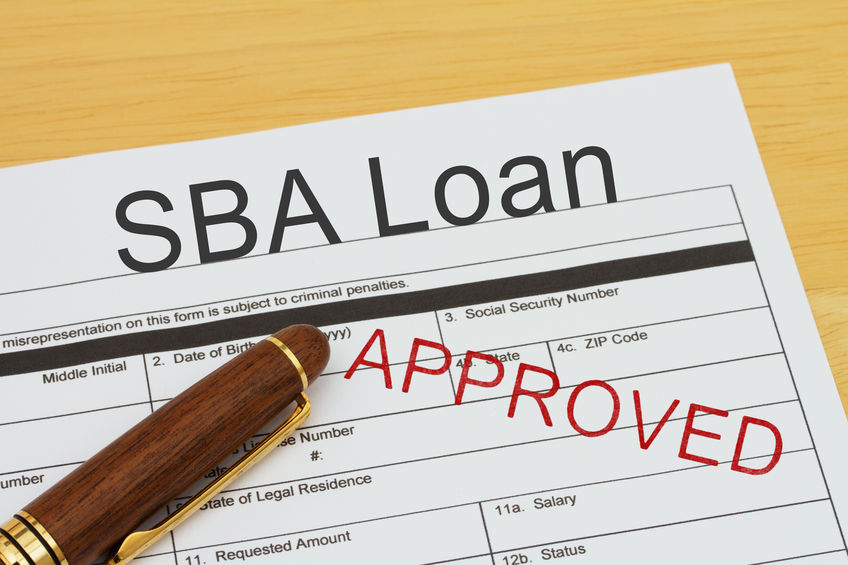Small Business Loans vs Conventional Loans: How One Stacks up Against the Other

Every small business owner’s dream is to knock the ball out of the park and join the ranks of Apple, Chipotle and Under Armour. What do these companies – tech, food and apparel – have in common? Once upon a time, when these three power hitters were small, they each received an injection of capital via a Small Business Administration (SBA) loan.
Success stories of a startup becoming a global brand fuel the desires of entrepreneurs. Many are convinced the only thing standing between them and a grand slam is access to capital. Lenders have a heightened interest in helping entrepreneurs become highly profitable, as that increases their profits. On the other side of the negotiating table is the business owner. To elevate their chances of being approved, the business must present a strong case to sell themselves as a qualified borrower. Thus, begins the dance: each partner analyzing the other.
Finding your match
Many entrepreneurs admit that coming up with an idea for a business is easy compared with securing a loan. A loan is a loan, right? Not exactly; there are significant differences between an SBA and conventional loan. With that in mind, how do you get the ball rolling? What are the qualifications? What are their benefits? To discover the answers, keep reading.
First steps: Getting the ball rolling
Banks must adhere to strict guidelines. They aren’t in business to dispense money for every idea that is pitched to them. To streamline operations, the SBA has prepared two lists: businesses types that are – and are not – considered qualified borrowers. An early step in the process should be to locate where your grand idea appears: the good list or the ineligible list. If you are on the ‘do not lend’ list, you can concentrate your efforts on taking the conventional route.

What you need to know about the SBA
While the U.S. Small Business Administration is an independent agency of the federal government, it does not fund loans; however, one of its functions is to set guidelines for banks to follow as they make loans. In its 65-year history, the SBA has guaranteed millions of loans to entrepreneurs. Since SBA loans are guaranteed by the government, banks know that in the case of a default they won’t bear the entire loss; the government is on the hook to repay 85% of the loan to the lender.
The SBA loans aren’t a cookie-cutter or one-size-fits-all type. They offer more than 10 different categories of funding programs, including ones designed for Veterans, women and minorities. (Discover their differences.) To determine which one best suits your objectives, consult with your banker. NerdWallet points out, “SBA loans, as the 7(a) loans are also known, are the agency’s most popular type of financing.”
The government is famous for rules and regulations, and those applying for an SBA loan must be prepared to provide an abundance of documentation. Although not all-inclusive, the lists below compare some of the requirements for an SBA and a conventional loan.
What are the qualifications for an SBA Loan?
- The key word is small. A business must have a workforce of under 150 employees.
- Annual revenue: $750,000 to $38.5 million
- Primary business owners should have individual credit scores of at least 680.
- Strong record in the business arena, with at least two years of related experience, and other requirements.
- Adequate equity. New businesses should have a maximum debt-to-equity ratio of 3x; and 4x if already established
- Provide proof that their revenue is sufficient to pay all debts – without draining reserves.

What are the qualifications for a conventional loan?
- Possess excellent FICO score – 140 at a minimum
- Display a strong ability to service the debt (Debt Service Coverage)
- Demonstrate an attractive debt to worth ratio
- Provide a robust business plan, along with a framework of future projections
- Authenticate the existence of necessary collateral/assets, if needed, to cover the loan (Loan To Value or LTV)
Dissecting the benefits of an SBA loan and a Conventional loan
To help demystify the loan process, we have amassed some facts about both the Small Business Loan and the conventional loan.
SBA lends capital at every stage in a business cycle
Business owners not only need funds to propel them out of the dugout to first base; they will also require working capital to grow revenue, hire employees, pay rent, expand facilities, purchase equipment and market their goods and services. In describing the appeal of the SBA loan program, Forbes has dubbed it the “crown jewel of small business financing.” Once borrowers repay their first loan, they are more likely to receive additional funding for other needs and expenses.
Conventional loans and
Most Americans are familiar with a conventional loan: it’s a bank loan that is structured with a fixed interest rate and term. (Learn more about the cost of a fixed term loan using the Bankrate term loan calculator.) These types of loans are often a quick way for companies to secure capital. Keep in mind that both options offer borrowers low interest rates with affordable payment plans.
Each bank’s funding timelines will vary. Most SBA s have a loan turnaround time of 60-90 days – from inquiry to payout. However, if you have a good relationship with a bank, a conventional loan may be expedited. Of course, there will always be a vast array of variables in play.

SBA loans: Perks vs the Cons
| Perks | Cons |
| No prepayment penalties | Funds cannot be used for investments |
| Repayment plans for up to 25 years | Difficult for startups to obtain |
| Available for various working capital needs | No equity |
| Caps on interest rates | No prepayment penalty |
Conventional loans: Perks vs the Cons
| Perks | Cons |
| Lower interest rate | Prepayment penalties |
| Potentially faster turnaround | Requires higher credit scores |
| Flexible repayment terms | Funds only available for designated purpose |
| No borrowing cap | Abundance of documentation is required |
Repayment fine print on a conventional loan
Paying down debt on a conventional loan on a timely basis can elevate your credit score. However, prepayment penalties are often built into the loan.
Why do banks penalize early pay-offs?
To boost their profits, lenders want to keep accruing interest. The longer the term, obviously, the more profits they will harvest. Additionally, they have overhead costs and original fees to cover. A word to the wise: read the repayment fine print. If you are still in doubt, ask if there are fees for paying the loan off early. Armed with this insight, borrowers may be better equipped to negotiate terms with lenders.
How to apply for an SBA loan

Most banks can assist with generic questions, but step one
should be to visit the SBA’s
application website.
The SBA offers a treasure chest of information online. And these resources are
available for all small business owners, whether or not a loan is
transacted. (Visit SBA Business Guide and their Local Assistance database).
To make it around all the bases, successful businesses will need to secure some type of financial assistance from time to time. If you have a vision and executable plan for business growth, you are in a good starting place.





